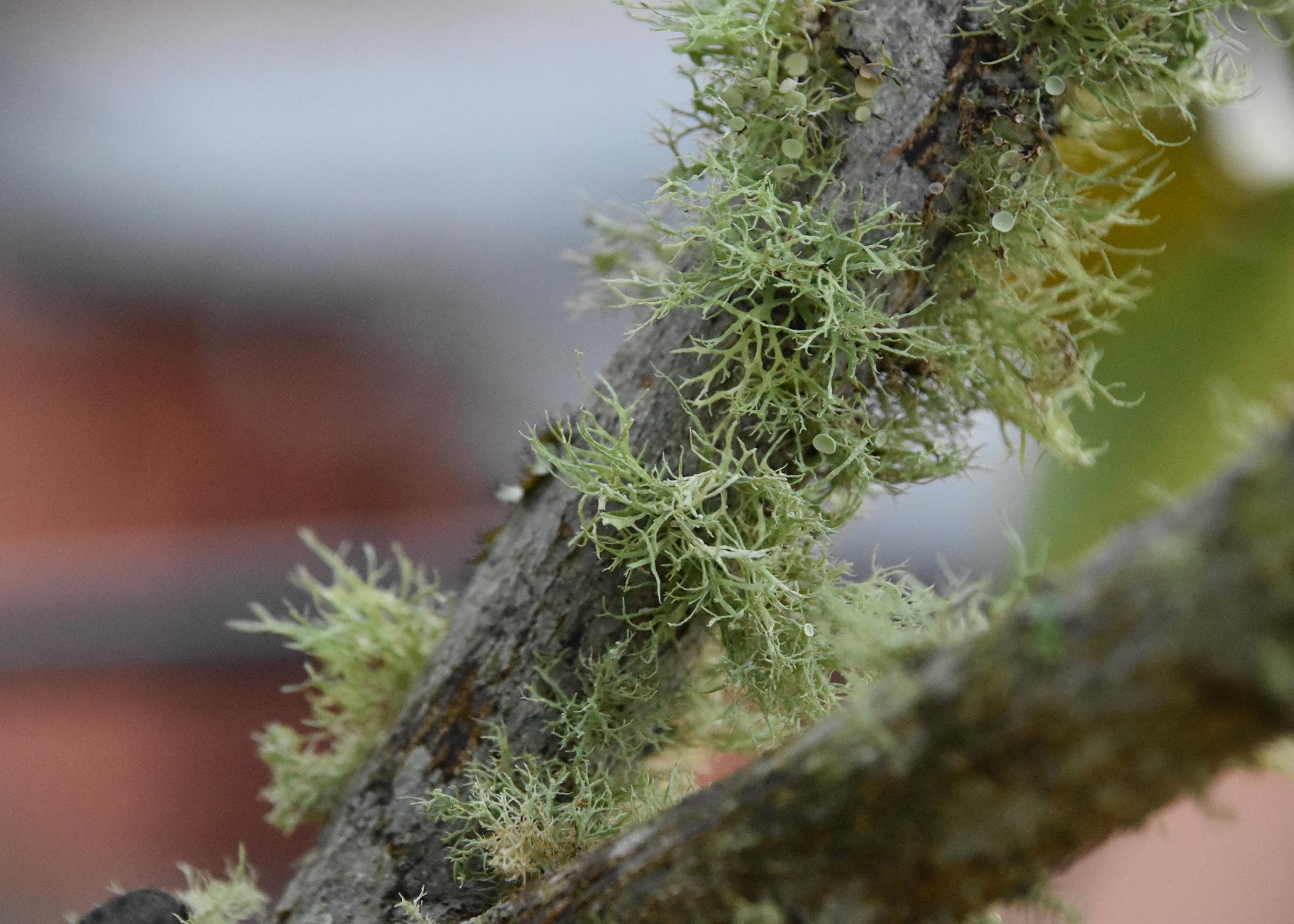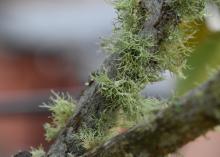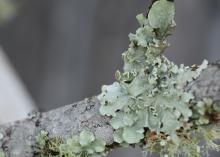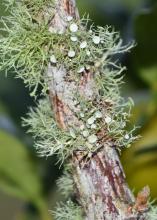Information Possibly Outdated
The information presented on this page was originally released on November 8, 2021. It may not be outdated, but please search our site for more current information. If you plan to quote or reference this information in a publication, please check with the Extension specialist or author before proceeding.
Autumn reveals lichen presence in landscape
I usually don’t need a calendar to tell where we’re at in the four gardening seasons of the year. Each season fills my email inbox and social media channels with the current landscape and garden problems and concerns.
I look at the questions coming in, and they indicate that more and more Mississippi residents are becoming active gardeners. This is a good thing.
In November, we are finally starting to get some colder weather, and many of our trees and shrubs -- especially the deciduous selections -- are showing the plants’ reactions to the falling temperatures. Gardeners see foliar discolorations, a normal reaction for this time of year, and take a little closer look to see what’s happening.
This examination leads to questions about the gray, moldy-looking stuff on the branches and trunks of various trees and shrubs. This is lichen, and it causes much consternation when first discovered.
Lichen is a naturally occurring organism that is quite fascinating. It is a combination of fungi and algae that live in symbiotic relationship. I often used the pun that the fungi and algae have taken a “likin” to each other. Ba-bum-bum!
Contrary to what the gardener thinks when seeing it on their plants, lichen does not harm the trees and shrubs. It only uses the plant for support. The algae photosynthesize and provide the food, while the fungi collect the water and other nutrients.
Lichen can present itself in several forms.
Most common are the lichens that develop into a sheet-like, wavy form, called foliose form, and a form that looks like a hairy, fuzzy growth, called fruticose form. All of the lichen forms we commonly see in Mississippi landscapes feature a gray-green coloration that I like to call garden patina.
Sometimes, we’ll see little, round structures appear on lichen, especially after a rain. These are fruiting bodies, and they are mostly gray-green, but I’ve noticed some lichen with dark-red fruiting bodies.
We normally don’t see the lichen because the tree’s leaves cover it up. In the fall, when the leaf canopy starts to thin naturally, more light gets into the interior of the tree. Because the lichen is able to photosynthesize more, it grows and becomes more noticeable. I find lichen growing on trees and shrub in my own home landscape.
While lichen does not harm trees and shrubs, it can indicate that the plant is under some kind of stress, especially if the tree canopy starts thinning in the middle of summer. So, keep an eye out and use lichen as a tool to gauge tree and shrub health.
There’s no treatment recommended to control lichen, as it does no harm. The best way to reduce the appearance of lichen is to keep your landscape and garden trees and shrubs in great shape with proper fertilization and watering.
Then sit back and enjoy the show when lichen adds to the landscape interest in the fall and winter.





